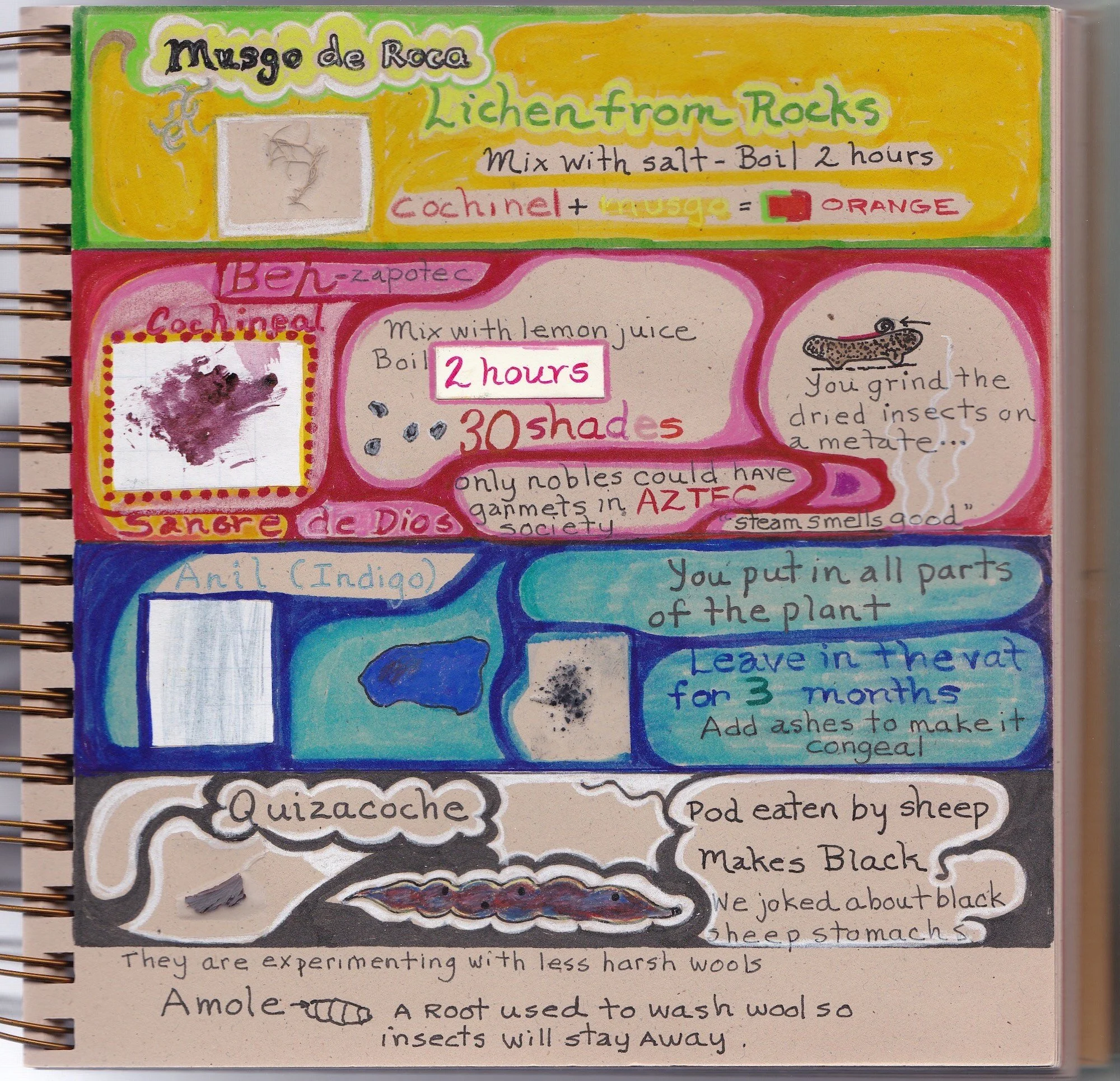8. Night Chorus
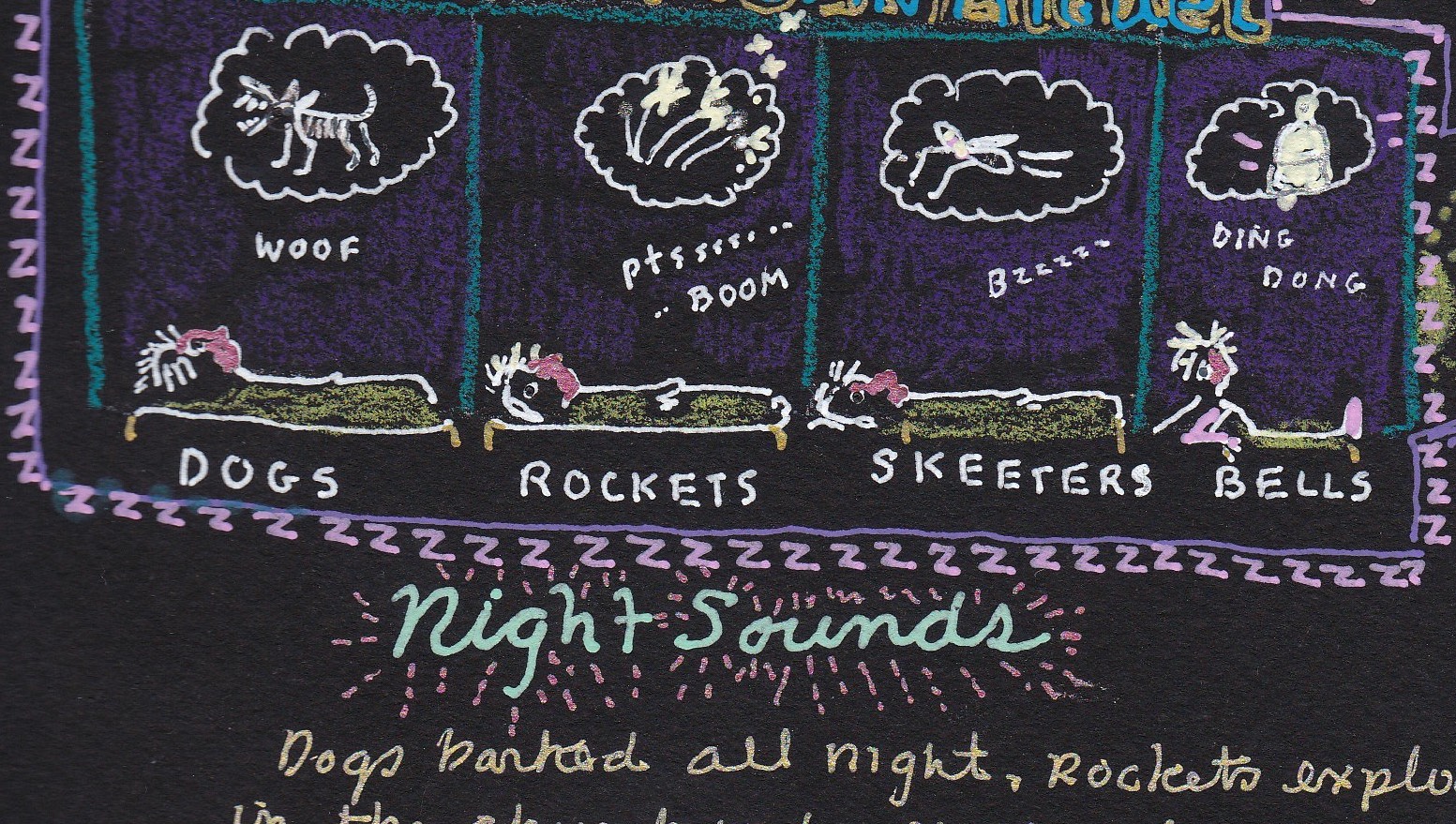
Night Chorus
After a twisting, two-hour drive from the main highway that runs south from the city of Oaxaca in southern Mexico, Gary and I and our friend Leslie pull into the town square of San Pablo Yaganiza. Leslie, an expert on Mexican culture and textiles, had inspired our excursion into the Zapotec mountains to observe first-hand a budding silk-weaving industry.
The shadows have deepened, and the late afternoon rays of the sun slant across the peaks of the Sierra Madre Mountains, washing the village in honeyed light, illuminating homes of adobe and cement block that line the main street. Some structures are unpainted; others whitewashed or painted in color box colors—a milky blue, pistachio green, a buttery yellow. Homes stretch up the hillsides to the east and west and radiate from the main square, spiraling back into the cleft formed by a river valley to the south. Pots of crimson geraniums and cascades of magenta bougainvillea decorate walls and rooftops and brighten a winter-dry landscape of skeletal trees and scrubby brush. More lush vegetation follows waterways that snake down the mountain valleys. Stands of pine trees and giant agave plants with golden puff-ball flowers circling their massive central stalk cover the mountain tops that rise above the town.
At the top of a steep paved road to the west, we can see the white and green city government offices and a domed church with twin bell towers. Children’s voices filter down from a playfield next to a large school on the hill. We can see the students in their navy and white uniforms lined up behind their teachers for a track and field event. A few women pass our car. Some wear the traditional dress, a white skirt and blouse belted with a magenta sash, and white cotton headwrap. Others dress in more modern clothes such as jeans and tee shirts.
The 1,200 inhabitants of this town are primarily Zapotec Indians. Their ancestors have inhabited these mountains at least 3,000 years. Although many also speak Spanish, the primary language is a dialect of Zapotec that is specific to this town. Customs and traditions of their ancestors have been carried forward, preserved partially by the isolation these mountains have provided. Recent improvements to the road that accesses these small mountain villages and the appearance of satellite dishes on rooftops tell of big changes as the modern world moves closer.
We will spend the night in Yaganiza with Leslie’s friend, Rebecca, an American linguist who has lived among the people of these mountains for several years. Her fluent Zapotec has allowed her to become a part of the community and we are anxious to learn from her about life in this town that still clings to its indigenous roots.
We park in front of a store that is painted lavender with blue doors and purple trim. It is the village equivalent of a 7-Eleven with its mosaic of pop bottles and plastic-wrapped fast food. Rebecca rents an apartment in the back of the building and she soon appears in the door to greet us. As there are no restaurants in Yaganiza, she has arranged to have her neighbor prepare a meal for us. We follow her across the street to a family compound, a cluster of houses around a courtyard of packed dirt where we are to have our evening meal.
We greet our cook, a middle-aged Zapotec woman with long braids that reach below her waist. She wears a checkered apron over her print dress and a white cotton headdress wraps around her head like a turban. We slide onto a wooden bench and are immediately surrounded by curious children. Their dark eyes follow the spoons to our mouths, and watch us as we tear our tortillas or pluck the meat from disarticulated chicken parts in the soup. Skinny brown dogs open sleepy eyes to check us out from their shady corners and chickens peck in the dusty courtyard. We bat at the opportunistic flies and smile a lot, making small talk and savoring the company and venue as much as the food. We learn from Rebecca about these people who live between the past and the present. Our most memorable lesson, however, is yet to come as Rebecca shows us to our rooms for the night.
Gary and I are to sleep in a small space that is used for storage and as a lounge for the proprietors of the store. We naïvely look forward to a much-needed night of peaceful sleep. Rebecca and Leslie retire to the two-room apartment that fronts a cement courtyard behind the store.
We survey our room. Pushed up against the wall is a narrow bed that is only slightly wider than a twin. The puffy blue polyester quilt with its cheery pink flower print looks inviting in the cooling evening air. I prepare myself for bed and lie down, grateful to have the day end. Almost immediately, I hit bottom, literally, feeling the unyielding hardness of plywood. I peer under the coverlet. Peeking from beneath a thin mattress pad is a petate (pay-TAH-tay).
A long-time student of the Mexican culture, I have always been curious about petates. These mats, woven in a single layer from reeds, have been the bed of choice for millions of indigenous Mexicans since pre-Hispanic times. About one-quarter-inch thick and flexible enough to be rolled and tied, they are highly portable and versatile. A Zapotec may be cradled in a petate when he is born, and then wrapped in one as his shroud when he dies.
Rebecca tells us mattresses are becoming more accepted in Yaganiza, but those who prefer to sleep on petates say mattresses hurt their backs. Petates are cooler on hot nights. In some towns in these mountains, the people spread them on a slightly raised platform of boards for sleeping. I am excited to have an authentic pre-Hispanic experience.
I find a couple of blankets that we lay on top of the petate to pad our hips. This gives us an extra half-inch, not cushy but a little more tolerable. Gary is still uncertain and eyes a tempting magenta and pink hammock that stretches across the corner of the room, but he opts for companionship and claims the wall half of the bed, rolling onto his side to make a space for me. As long as we coordinate our turns, we figure we will fit.
I pad to the door and turn out the single light bulb that dangles from the ceiling. It still is not dark. A large, rectangular fish tank at the foot of the bed illuminates the room, casting its bluish fluorescent glow on stacks of soft-drink cases filled with dust-frosted, half-liter bottles of Coke, green Fanta bottles with yellow labels, and the ubiquitous plastic bottles of purified water. Two bulbous goldfish cut the water of the aquarium as an aerator makes a bubbling hiss that echoes off the gray cement walls of our windowless room. Not wishing to contribute to the demise of the inhabitants of the aquarium by shutting it down, I resign myself to the inevitable and slide carefully under the covers of our bed. I have no expectations of instant sleep, but just in case, I close my eyes. Briefly.
Powered by a shot of adrenaline, they fly open and I sit bolt upright as I hear a giant, fluttering creature swoop in through the partially open, blue metal door that leads to the courtyard. My heart races. Could it be a murciélago, a bat? I have read about Mexico’s vampire bats that can quietly attach themselves to your flesh and drink your juices while you sleep. I can see it silhouetted against the fish tank, wings as wide as the span of my two hands. I poke Gary, my protector against things of the night. He mumbles, unimpressed by this deadly display. The creature settles on the wall and crams itself into the space behind the aquarium. I am finally able to see the dimly illuminated pattern on its wings. It is a moth, the biggest I have ever seen. Fully awake, I rise to get a closer look, but it wings its way out the door into the night.
I claim the narrow space next to my oblivious husband again and try to lure sleep by closing my eyes and tucking the covers around me, plumping my leaden pillow and thinking giant moth thoughts. The dogs begin. I now know why we saw so many sleeping dogs in the little towns we passed through today. Mountain dogs are awake all night. The barks are amplified by the surrounding hills. They sing to each other, announcing territory, warning of invisible intruders, probably crooning love songs to their sweeties. One bark, two, a volley, a chorus of angry sounding mongrels tune up.
We learned from Rebecca that dogs, known as “bekw” in Zapotec, are special to the locals. Legends tell that, long ago, a massive flood filled the valleys, driving the people and animals to the tops of the mountains. Their cooking fires had been extinguished and it was cold. So the village dogs swam from distant mountaintop islands, carrying burning sticks in their jaws so the people could have fire and cook food. Nowadays even though they are not generally treated as pets, people toss tortillas to dogs in thanks for saving those ancient ancestors. In concert with Gary, I rotate onto the other hip and endure, figuring I will donate some of my sleep as tribute to the descendents of those hero dogs.
The donkeys join in. We had passed a quartet of them that day on their return from the forested slopes laden with firewood. They looked very small and ill-tempered, probably a result of their huge, pokey loads and the feel of their master’s stick on those bristly flanks if they slowed. I can only guess as to their conversations, but I picture their skinny bodies compressing like accordions and suddenly expanding to create that huge sound. Rather than using a specific word for each animal sound, Rebecca tells us that the Zapotec use the word “shout” to describe many animal sounds. Good choice.
My husband thrashes next to me. We try spoons for a while. Now both our hips have drilled though the blanket pad and the petate to reach the board surface below. “What time is it?” I ask, hoping he is suffering, too. “Three o’clock,” he mumbles. And all is not well, judging from the continued sound of the dogs. They must be warning of hundreds of thieves, jaguars, and teasing boys lurking in the streets.
The roosters, fools that they are, announce a dawn that is hours away. I can visualize them, strutting and puffing in the dark, trying to sound impressive against the dog/donkey chorus, perhaps hoping to be the first ones to bring news of the rounding sun. Maybe they are crying for the chicken whose leg was floating in my soup last evening. My mind flashes to something I read recently, that the Mexican farmers feed their chickens marigolds to make their yolks yellower and their meat a tempting orange. These guys probably snack on the wild marigolds of the valley. I amuse myself, picturing the pimpled, pumpkin-colored skin beneath those scruffy feathers.
Joining in for the poultry movement of our night symphony, the turkeys begin. “Chkoljb, chkoljb,” they gobble, speaking fluent Zapotec. I watched the males yesterday, impressively fanning their tail feathers and plumping out their bodies, wattles swaying red and long down dusty breasts. With shriveled necks and beady eyes, they had watched protectively to see if we would dare to enter their harems of lovely hens. Let them have their moment. Rebecca tells us there is a wedding coming up and many turkeys will sacrifice their lives for the banquet. Seventy-five ended up on plates (probably covered with molé sauce) for a December wedding two months ago along with an ox and four pigs. Their species has been on this land since pre-Hispanic times. We are here for a single night. It is their time now as they join the chorus with intense and punctuated gobbling. I find I am beginning to enjoy this night symphony. I will pay for the performance tomorrow.
Time crawls, but I feel that dawn is near. The dogs, who must have paused for a quick rest, start up again; the sane roosters who actually do see the earliest glow of the sun, crow expectantly; and non-neon light creeps in around the edges of the door. I gratefully roll from the stony bed and dress to the sounds of school announcements from the loudspeaker on top of the hill above us. A young female voice booms across the town. “Victoria Vasquez Vasquez, Dulce Monica Toledo,” she reads off an endless list of names. This is followed by a peppy song sung by cheery voices, a signal for the children of Yaganiza to climb the hill to school.
I push wide the metal door and walk stiffly across the courtyard to the bathroom, a cement cubicle separated from public view by a white plastic shower curtain. The forest green toilet, a seatless beauty, is my box seat for the finale of the choral production. A smile cracks my weary face as an invisible songbird sings a perfect scale from top to bottom and is kind enough to repeat the refrain several times.
A night lost but a town found. I have heard the lullaby, the night sounds of Yaganiza, the sounds that put the people to sleep—all but the two gringos on the thin petate.
* * *
Home again, the night is deep and moonless as I lie on my tender bed in Seattle, listening to the sounds that occasionally punctuate the stillness. Tires hiss on the wet surface of Highway 520 that spans the end of the bay. A truck uses compression brakes as it noses down the incline from Capitol Hill to Montlake. The whining engine of an airplane changes to a lower pitch as it angles in for a landing at SeaTac Airport. These are the sounds that tell me that all is well in my part of the world, the sounds that lull me to sleep at night.
I marvel that the same sky stretches to cover both Seattle and Yaganiza. I will soon fall asleep, listening to the gentle sound of my neighborhood. My Zapotec friends will hear the dogs and the turkeys, pull the covers up as they stretch out on those wonderful petates, knowing that all is well. We fall asleep lulled by our own night chorus.
* * *
Gallery
To proceed through images, click on arrows or thumbnails…
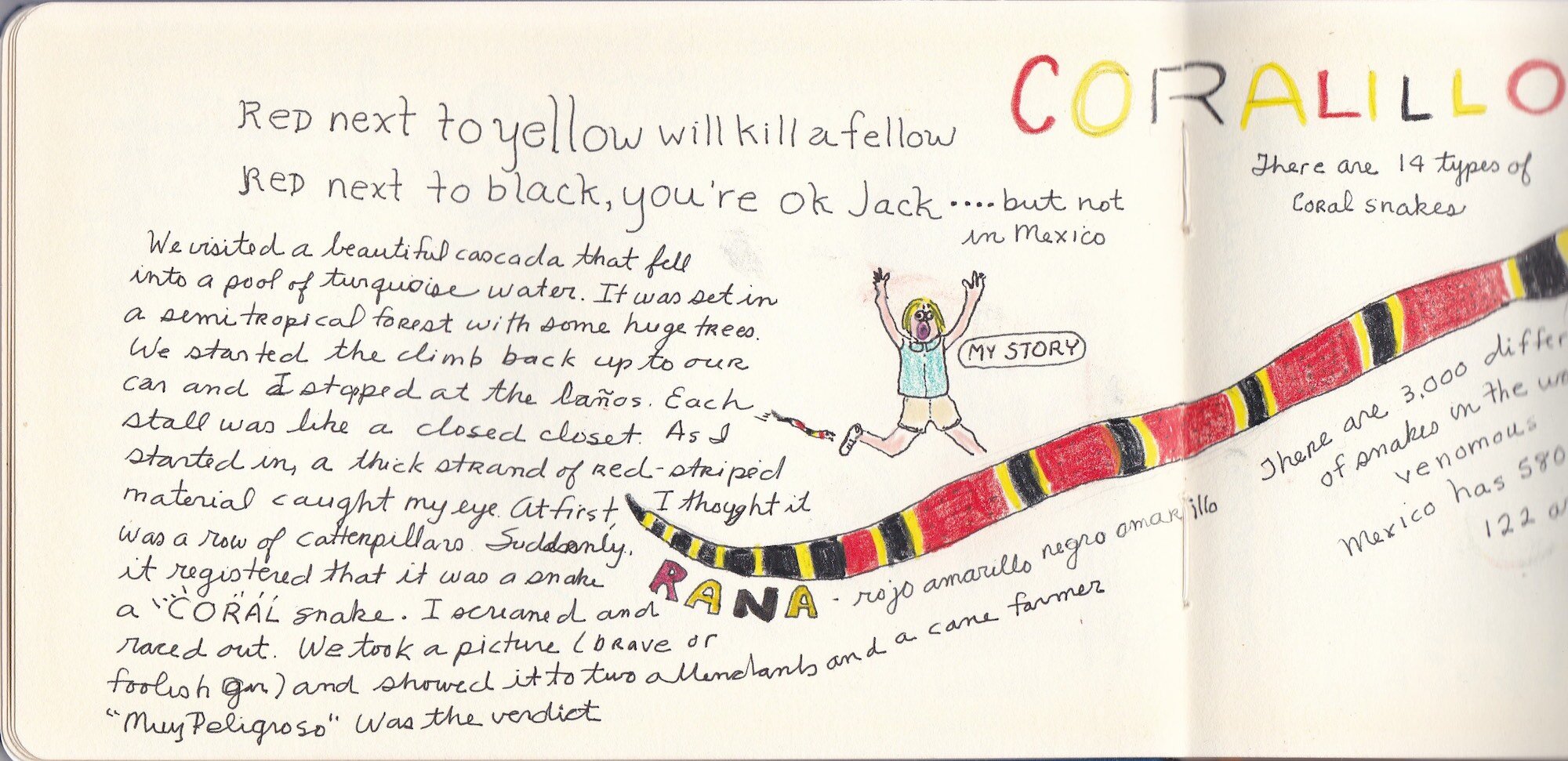
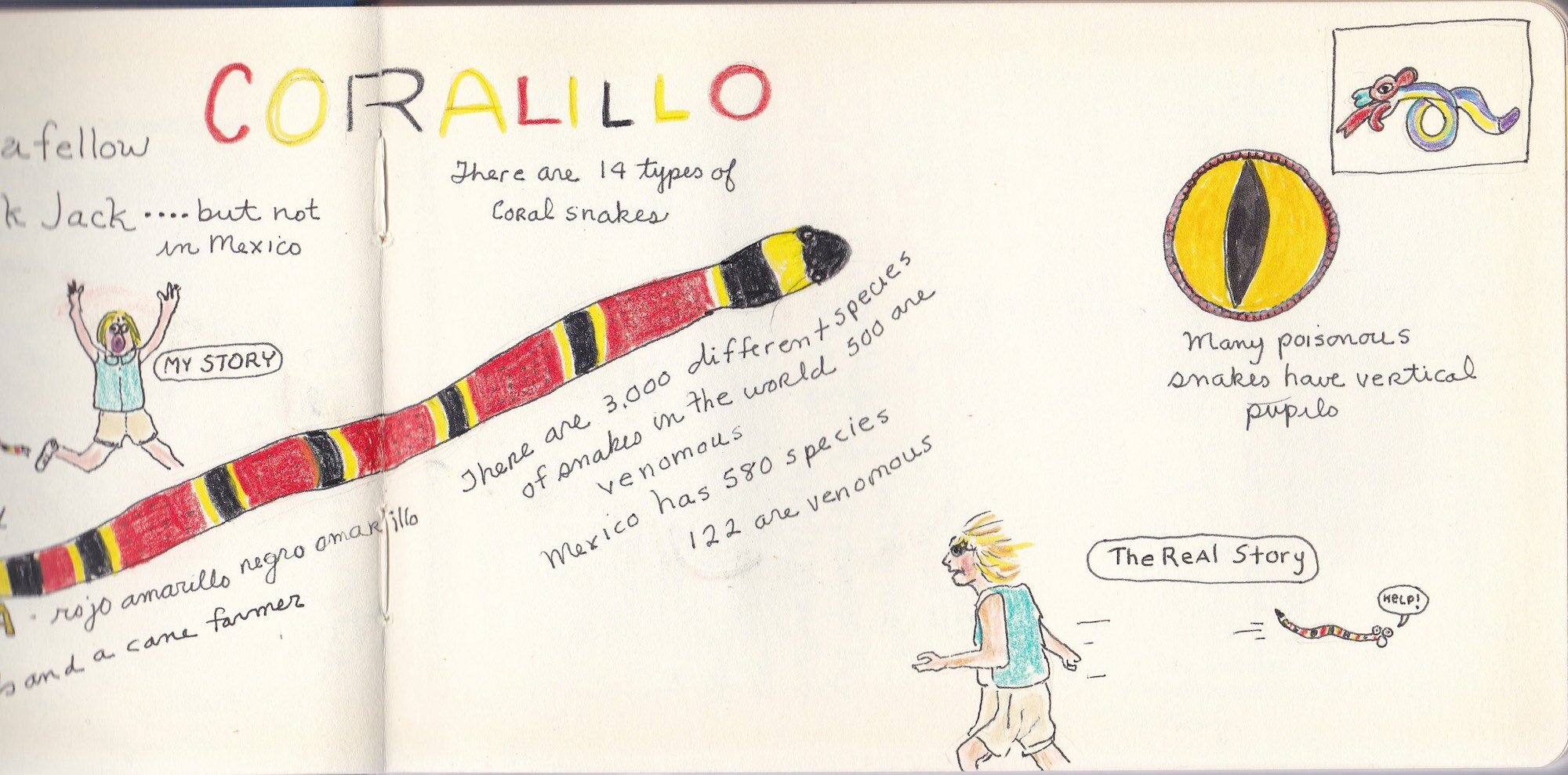
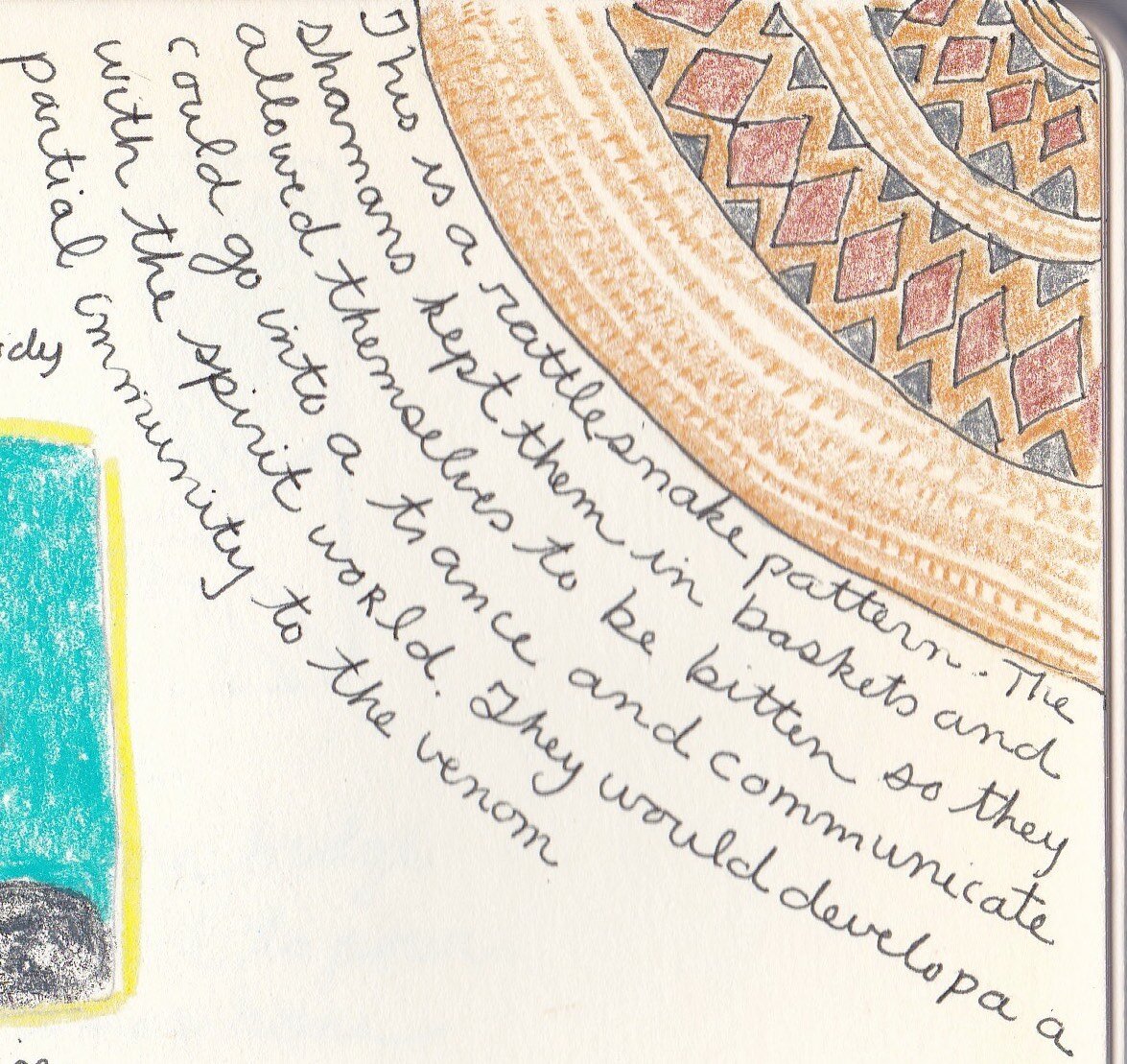
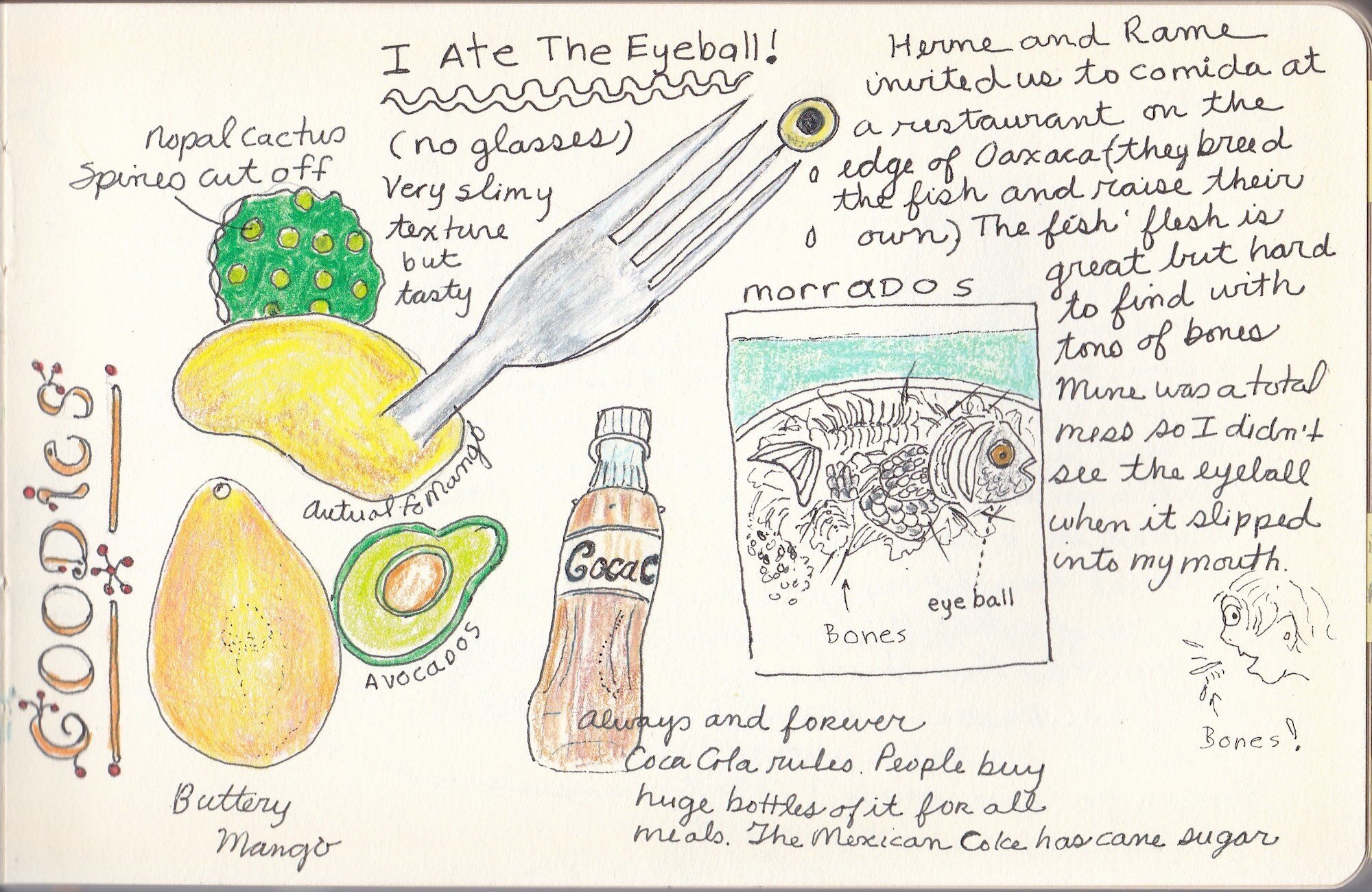
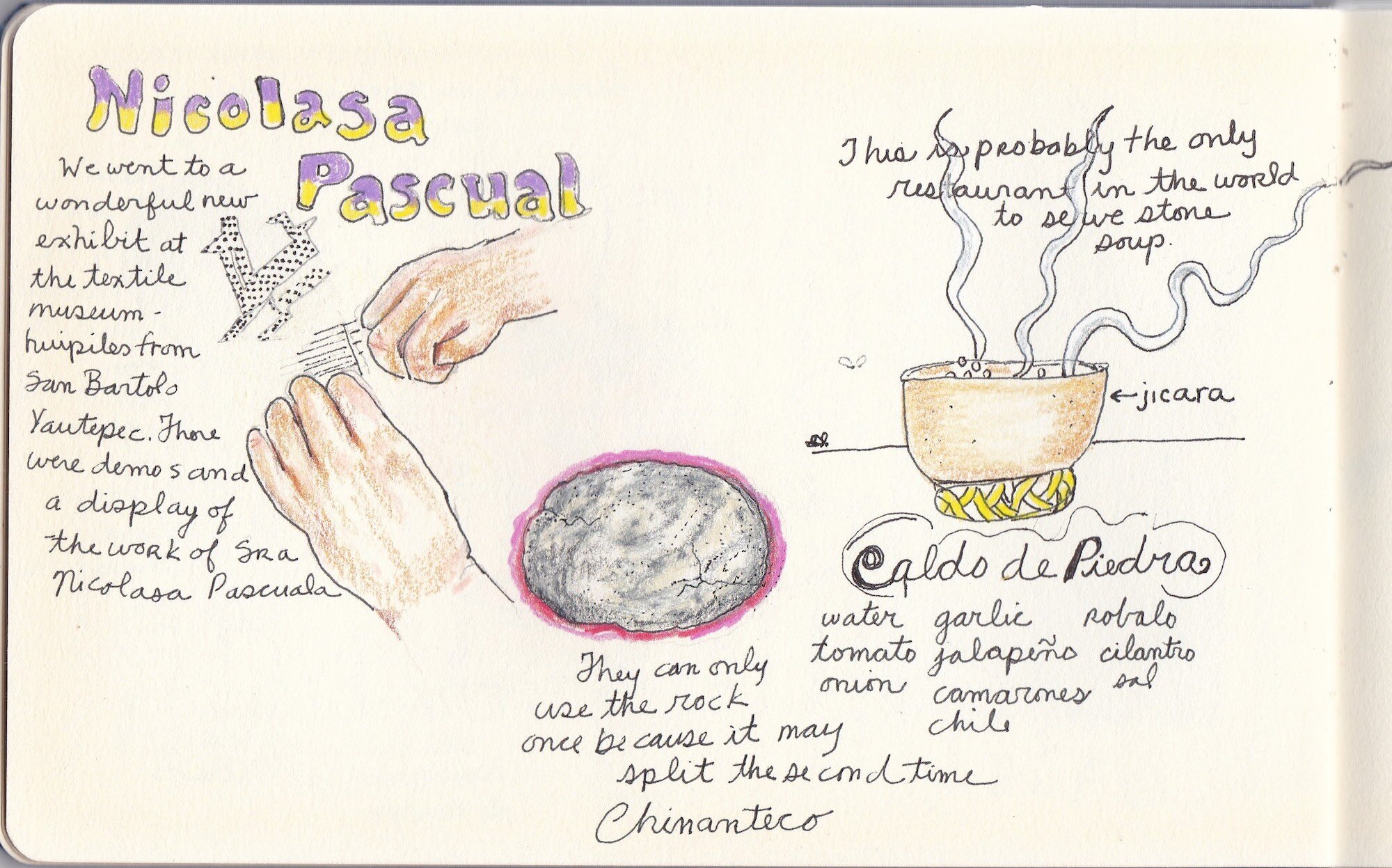


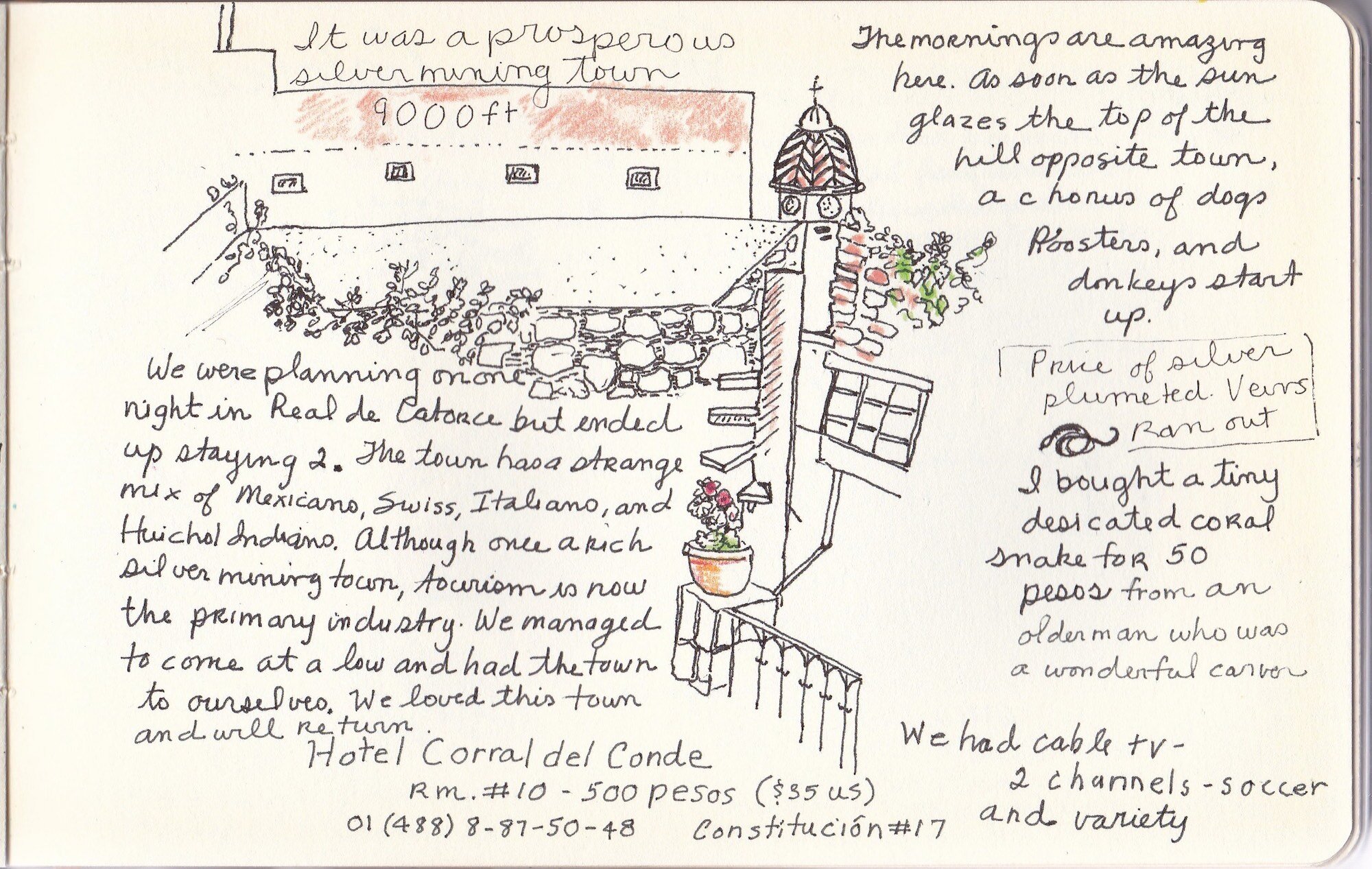
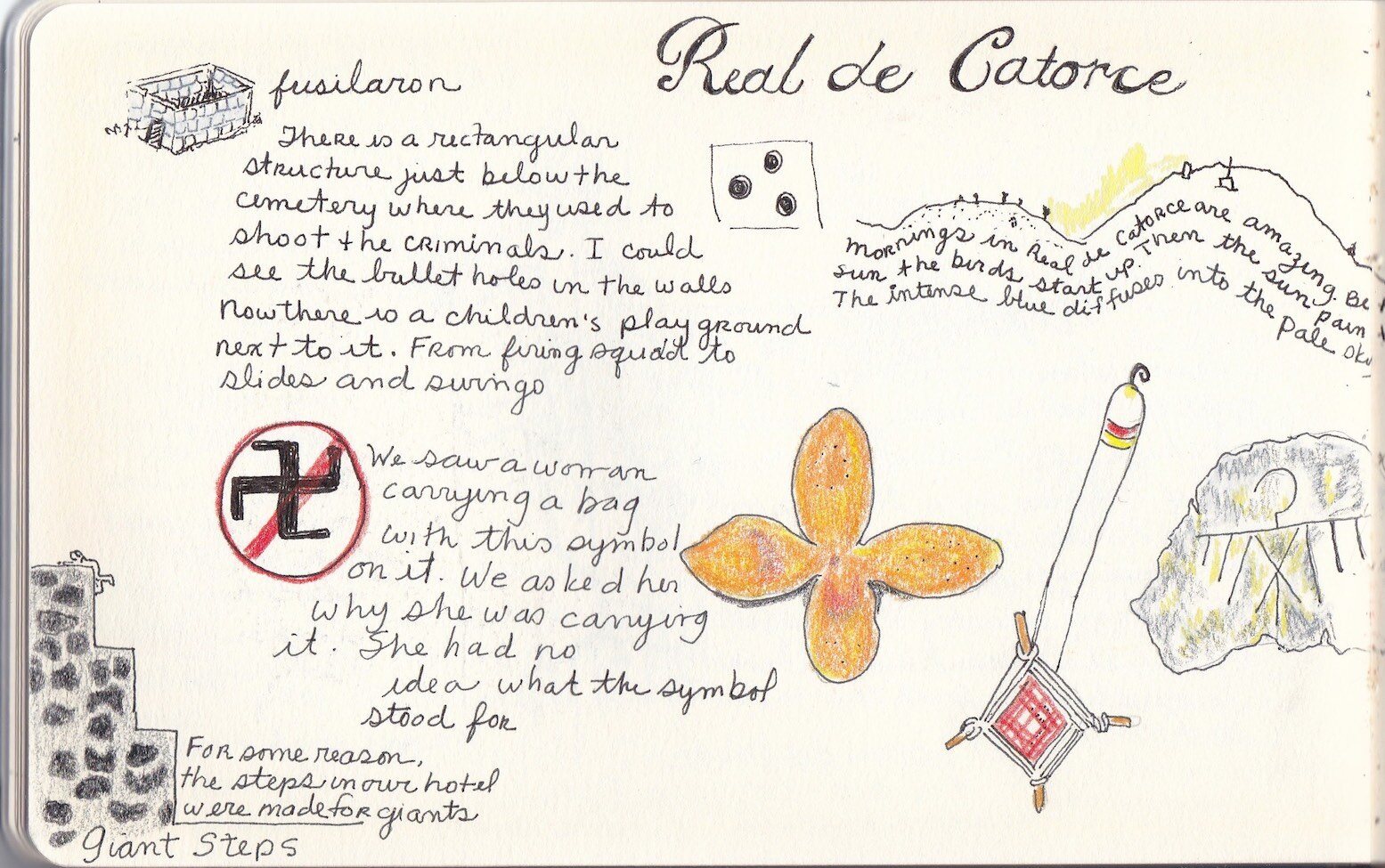
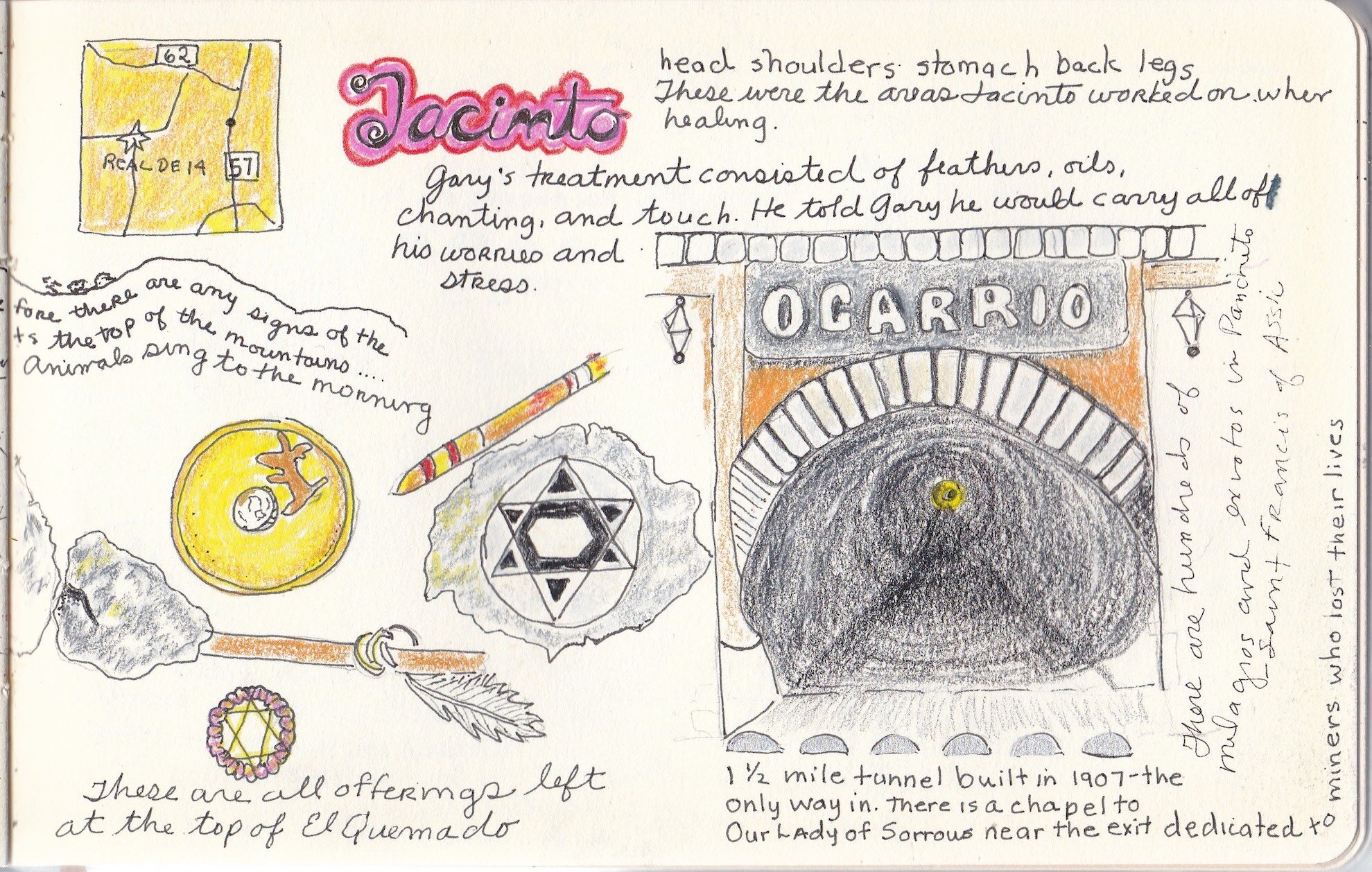
All Content Copyright ©2020 Linda Oman | All Rights Reserved

